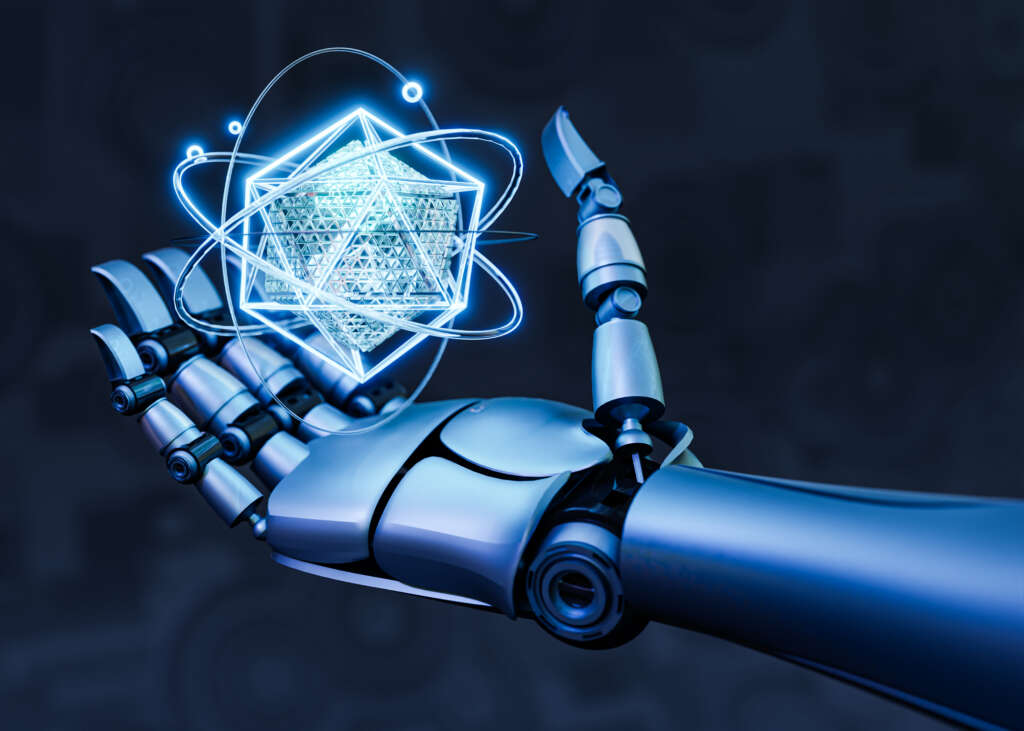Machine learning has become a buzzword in today’s technology-driven world. But what exactly is machine learning? In simple terms, it is a subset of artificial intelligence that enables computers to learn from data without being explicitly programmed. It is the science of getting computers to learn and act like humans do, and it has the potential to revolutionize various industries. From self-driving cars to personalized recommendations on streaming platforms, machine learning is everywhere.
What is Machine Learning?
Machine learning is a field of study that focuses on developing algorithms and models that allow computers to learn from data and make predictions or decisions without being explicitly programmed. It is based on the idea that machines can learn from experience and improve their performance over time. The core concept of machine learning is to enable computers to learn from examples, patterns, and past experiences, and then use this knowledge to make accurate predictions or take appropriate actions.
History and Evolution of Machine Learning
The history of machine learning can be traced back to the 1940s and 1950s when early pioneers like Alan Turing and Marvin Minsky laid the groundwork for artificial intelligence. However, it wasn’t until the 1990s that machine learning gained significant momentum, thanks to advancements in computing power and the availability of large datasets. Since then, machine learning has rapidly evolved, with breakthroughs in areas like deep learning, natural language processing, and computer vision.
Types of Machine Learning Algorithms
Machine learning algorithms can be broadly classified into three categories: supervised learning, unsupervised learning, and reinforcement learning.
Supervised Learning: Understanding the Basics
Supervised learning is the most common type of machine learning algorithm. It involves training a model on labeled data, where the desired output is known. The model learns from this labeled data and can then make predictions on new, unseen data. Popular supervised learning algorithms include linear regression, logistic regression, decision trees, and support vector machines.
Unsupervised Learning: Exploring Patterns and Clusters
Unsupervised learning, as the name suggests, involves training a model on unlabeled data. The goal is to discover patterns, relationships, or clusters within the data. Unsupervised learning algorithms are often used for tasks like customer segmentation, anomaly detection, and recommendation systems. Clustering algorithms like k-means, hierarchical clustering, and dimensionality reduction techniques like principal component analysis (PCA) are commonly used in unsupervised learning.
Reinforcement Learning: Training Machines to Make Decisions
Reinforcement learning is a type of ML where an agent interacts with an environment and learns to make decisions through trial and error. The agent receives feedback in the form of rewards or penalties based on its actions, and the goal is to maximize the cumulative reward over time. Reinforcement learning has been successfully applied to various domains, including robotics, game-playing, and autonomous systems.
Machine Learning in Real-World Applications
Machine learning has found its way into several real-world applications across diverse industries, transforming the way we live and work. Let’s explore a few examples:
Healthcare: ML algorithms are being used to develop predictive models for diagnosing diseases, analyzing medical images, and personalizing treatment plans. This has the potential to improve patient outcomes and reduce healthcare costs.
Finance: In the finance industry, ML is used for fraud detection, credit scoring, algorithmic trading, and portfolio management. By leveraging historical data and learning patterns, machine learning algorithms can identify potential fraudsters and make accurate predictions about financial markets.
Retail: Machine learning is revolutionizing the retail industry by enabling personalized recommendations, demand forecasting, and inventory optimization. E-commerce giants like Amazon use machine learning algorithms to recommend products based on users’ browsing and purchase history.
Benefits and Challenges of Implementing ML
Implementing deep learning in an organization can offer numerous benefits, but it also comes with its fair share of challenges.
Benefits of Implementing Machine Learning
- Improved decision-making: Machine learning can analyze vast amounts of data and provide insights that humans may overlook. This leads to better decision-making and more accurate predictions.
- Automation and efficiency: By automating repetitive tasks and streamlining processes, machine learning can significantly improve efficiency and productivity.
- Personalization: Deep learning algorithms can analyze user behavior and preferences to deliver personalized experiences. This can enhance customer satisfaction and drive sales.
Challenges of Implementing Machine Learning
- Data quality and availability: Machine learning models heavily rely on high-quality and relevant data. Obtaining and cleaning such data can be a challenging and time-consuming task.
- Interpretability and transparency: Some deep learning algorithms, especially deep learning models, are often considered “black boxes” as they lack interpretability. This can lead to ethical concerns and issues with regulatory compliance.
- Skill gap and resource allocation: Implementing ML requires a skilled workforce and adequate resources. Training employees and acquiring the necessary infrastructure can be a significant investment.
How to Get Started with Machine Learning
Getting started with deep learning may seem daunting, but with the right approach, anyone can learn and apply its principles. Here are some steps to help you get started:
Learn the Basics
Start by gaining a solid understanding of the fundamentals of ML. Familiarize yourself with the key concepts, algorithms, and techniques used in machine learning. Online courses, tutorials, and books can be valuable resources for learning the basics.
Acquire and Prepare Data
As mentioned earlier, data plays a crucial role in deep learning. Identify the data you need for your specific application and gather it from reliable sources. Clean the data, handle missing values, and perform any necessary preprocessing steps to ensure the data is ready for analysis.
Choose the Right Algorithm
Selecting the right algorithm depends on the type of problem you are trying to solve and the nature of your data. Consider factors like the size of the dataset, the complexity of the problem, and the interpretability requirements. Experiment with different algorithms and evaluate their performance to find the best fit for your application.
Train and Evaluate the Model
Split your data into training and testing sets. Use the training set to train the model and the testing set to evaluate its performance. Measure metrics like accuracy, precision, recall, and F1 score to assess how well the model is performing. Fine-tune the model by adjusting hyperparameters to improve its performance.
Deploy and Monitor the Model
Once you are satisfied with the model’s performance, deploy it in a production environment. Continuously monitor the model’s performance and collect feedback to make necessary updates and improvements. Machine learning models are not static; they need to be adapted and fine-tuned over time.
Tools and Resources for Machine Learning
To effectively implement machine learning, you need the right tools and resources. Here are some popular tools and resources for machine learning:
- Python: Python is a widely used programming language for machine learning. It offers several libraries and frameworks like scikit-learn, TensorFlow, and PyTorch, which simplify the implementation of machine learning algorithms.
- Jupyter Notebook: Jupyter Notebook is an open-source web application that allows you to create and share documents containing live code, equations, visualizations, and narrative text. It is a popular tool among ML practitioners for prototyping and experimenting with algorithms.
- Kaggle: Kaggle is a platform that hosts ML competitions and provides datasets for practice. It is a great resource for learning, exploring datasets, and collaborating with other data scientists.
- Online courses: Platforms like Coursera, Udemy, and edX offer a wide range of online courses on machine learning. These courses cover various topics, from introductory to advanced, and provide hands-on exercises and projects to reinforce learning.
Ethical Considerations in Machine Learning
Deep learning has the power to transform industries and improve lives, but it also raises important ethical considerations. Here are some key ethical considerations in machine learning:
Privacy and data protection: Deep learning requires access to vast amounts of data, often personal or sensitive in nature. It is essential to handle this data responsibly, ensuring privacy and protection against unauthorized use or access.
Bias and fairness: ML models can inadvertently learn and perpetuate biases present in the data they are trained on. It is crucial to address these biases to ensure fairness and prevent discrimination.
Transparency and interpretability: As mentioned earlier, some ML algorithms lack interpretability, making it difficult to understand the reasoning behind their decisions. This lack of transparency can lead to distrust and raise ethical concerns.
Accountability and responsibility: ML algorithms are created by humans and can be prone to errors or malicious intent. It is important to establish accountability and responsibility for the actions and decisions made by these algorithms.
Future Trends in Machine Learning
Deep learning is an ever-evolving field, and several trends are shaping its future. Here are some key trends to watch out for:
Explainable AI: As ML models become more complex, explainability becomes critical. Researchers are working on developing techniques to make AI models more transparent and interpretable, enabling users to understand and trust the decisions made by these models.
Federated Learning: Federated learning allows multiple devices or organizations to collaboratively train a machine learning model without sharing their data. This approach addresses privacy concerns and enables the development of robust models on decentralized data sources.
Edge Computing: Edge computing involves processing data near the source rather than relying on a centralized cloud infrastructure. This approach reduces latency and allows real-time decision-making, making it ideal for applications like autonomous vehicles and IoT devices.
Human-Machine Collaboration: The future of deep learning lies in human-machine collaboration. Instead of replacing humans, machines will work alongside humans to enhance productivity, decision-making, and creativity. This collaboration will open up new possibilities and transform various industries.
Embracing the Power of Machine Learning
Deep learning is not just a buzzword; it is a powerful tool that has the potential to transform industries and improve lives. By understanding the basics of machine learning, exploring its real-world applications, and addressing ethical considerations, we can harness its power responsibly. As technology continues to advance, it is crucial to stay updated with the latest trends and continuously learn and adapt to the ever-evolving field of machine learning. So, embrace the power of machine learning and unlock a world of possibilities.







Popular Comments